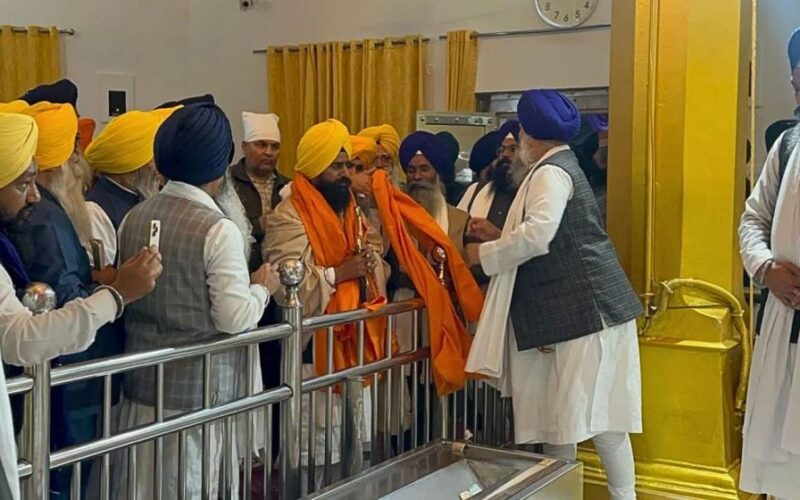Sri Anandpur Sahib, March 10, 2025 – In an unexpected pre-dawn move, the Shiromani Gurdwara Parbandhak Committee (SGPC) installed Giani Kuldeep Singh Gargaj as the jathedar of Takht Kesgarh Sahib at 2:45 AM, seven hours before the scheduled ceremony. The decision came after Nihang outfits threatened to disrupt the event and several Sikh organizations announced a boycott over the controversial removal of previous jathedars.
Giani Gargaj, 40, was also given additional charge as acting jathedar of Akal Takht, Sikhism’s highest temporal authority in Amritsar. The rushed appointment, conducted in the presence of the Panj Pyare (five beloved ones) of Akal Takht, took place in secrecy, avoiding the large gathering that typically marks such occasions.
Tension and Opposition Forces Early Installation
The official ceremony was initially planned for 10 AM on Monday, with invitations sent to Sikh organizations, sects, and seminaries. However, the situation turned volatile after the SGPC’s removal of Giani Raghbir Singh as Akal Takht jathedar and Giani Sultan Singh as Takht Kesgarh Sahib jathedar on March 7.
Major Nihang outfits, including Shiromani Panth Akali Budha Dal, Dal Panth Baba Bidhi Chand Sursingh, Misl Shaheedan Tarna Dal Baba Bakala, Tarn Dal Harya Belan, and Dashmesh Tarna Dal, opposed the move. They began gathering in Sri Anandpur Sahib on Sunday evening, vowing to prevent the ceremony.
Faced with mounting pressure, the SGPC executive committee secretly brought Giani Gargaj to Takht Kesgarh Sahib at 2:45 AM, where he assumed charge in a low-key event. The traditional dastar (turban) of authority was presented to him by the Panj Pyare, alongside Takht Kesgarh Sahib’s granthis. No other senior SGPC officials were present amid rising opposition.
Jathedar Calls for Sikh Unity Amid Crisis
After taking charge, Giani Gargaj urged the Sikh community to unite in these challenging times. “There is an urgent need to establish platforms for dialogue based on mutual trust in the Guru,” he stated, calling on Sikhs to stand together under the Nishan Sahib (Sikh flag).
Addressing social and political issues, he highlighted the lack of religious and political unity among Sikhs, the long incarceration of Sikh prisoners, and the failure of successive governments to deliver justice for the 1984 anti-Sikh riots. He criticized the government for using harsh laws like UAPA and NSA against Sikh youths, while anti-Sikh elements received special privileges.
He also raised concerns about Punjab’s demographic shifts, alleging that a deliberate effort is being made to turn Sikhs into a minority by settling large numbers of non-Punjabis in the state. He blamed political leaders for prioritizing vote banks over Sikh interests.
Calls to Reconnect with Sikh Values
On the social front, he condemned the rising drug crisis in Punjab, attributing it to the erosion of religious values and unchecked substance abuse. He pledged to launch a grassroots Sikh awareness campaign to counter the growing trend of religious conversions and revive faith among youth.
In a final message to Sikh youngsters, he urged them to embrace Sikh identity, calling on those with shorn hair to adopt turbans instead of tying handkerchiefs in reverence to Sri Anandpur Sahib’s sacred traditions.
With the backdrop of the annual Hola Mohalla festival, the unexpected midnight ceremony has intensified debates within the Sikh community. As divisions deepen, all eyes will be on how Sikh leadership navigates these turbulent times.

